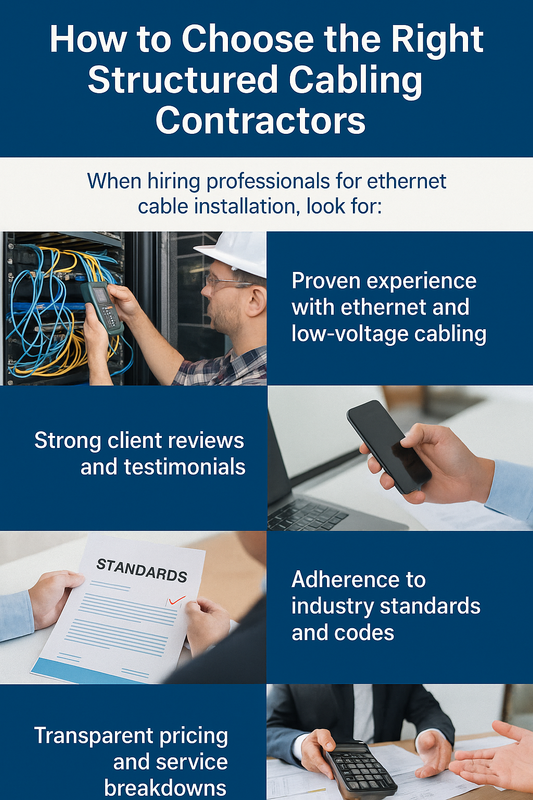Why Wall Plates Matter in Ethernet Cable Installations?

In today’s fast-paced digital age, a dependable network infrastructure isn’t just helpful—it’s a necessity. Whether you're launching a new office or enhancing existing systems, expert ethernet cable installation services are key to keeping everything connected smoothly.
One small yet crucial piece that often gets overlooked? The ethernet wall plate—a budget-friendly addition that brings major benefits in both function and appearance.
Let’s break down what ethernet wall plates do, why they’re important, and how structured cabling contractors and fiber optic installers use them in commercial network setups.
What Is an Ethernet Wall Plate?
An ethernet wall plate is a wall-mounted unit that provides a neat and professional outlet for network connections. These plates usually feature one or more ports where ethernet cables can connect to computers, routers, or other devices.
They’re available in various designs—single, double, or multi-port—to match your connection needs at each point of access.
These modest devices offer a tidy and accessible solution for in-wall cable systems, usually installed by structured cabling experts to support reliable and scalable networks.
Advantages of Ethernet Wall Plates in Cabling Installations
Top cabling professionals often recommend ethernet wall plates because of their technical and visual perks:
✅ Organized Cable Management
Wall plates route wires through walls, eliminating messy tangles. This keeps workspaces tidy and makes it easier to service and manage cables later.
✅ Reliable, Strong Connections
They help create secure plug-ins between equipment and the network, reducing risks of loose cables or dropped connections.
✅ Protection Against Interference
Wall plates can also block electromagnetic interference (EMI), which means better signal quality—especially valuable in busy office environments.
✅ Simplified Maintenance and Upgrades
If there’s a network issue, wall plates allow for quick identification and access to cables, cutting downtime during repairs or upgrades.
✅ Clean, Professional Design
Loose wires can look sloppy. Wall plates create a streamlined aesthetic, fitting well with modern office interiors.
✅ Room to Grow
Installers often use modular wall plates that can handle additional ports, making it easier to expand your network down the line.
Wall Plates and Industry Standards in Structured Cabling
For commercial installations, meeting industry standards like ANSI/TIA-568 isn’t optional—it’s essential. Wall plates help meet those standards by:
- Allowing correct cable terminations
- Reducing signal loss at connection points
- Ensuring consistent labeling and layout
They also help contractors meet fire safety rules, building codes, and property requirements, making them vital for compliant, top-tier cabling projects.
How to Choose the Right Structured Cabling Contractors?
When hiring professionals for ethernet cable installation, look for:
- Proven experience with ethernet and low-voltage cabling
- Strong client reviews and testimonials
- Adherence to industry standards and codes
- Transparent pricing and service breakdowns
Great contractors will always recommend wall plates as a key part of any well-planned and future-ready network.
Why Fiber Optic Installers Rely on Wall Plates?
Businesses today need more than just speed—they need stable, scalable, and clean network designs. That’s why they turn to fiber optic cable specialists who know the importance of wall plates in delivering high-performance solutions.
Whether you’re wiring a law firm, school, clinic, or corporate office, wall plates offer a smart way to organize access points, and seasoned installers ensure they’re properly integrated from the start.
Closing Thoughts
A high-quality network isn’t just about cables and hardware—it’s about smart, efficient planning. Ethernet wall plates may seem minor, but they’re key to your system’s reliability, code compliance, and appearance.
So if you’re investing in ethernet cabling, make sure wall plates are part of the plan.
Looking for expert advice? Reach out to certified cabling contractors or fiber optic pros who can help with everything from planning to upgrades.
Post Your Ad Here
Comments